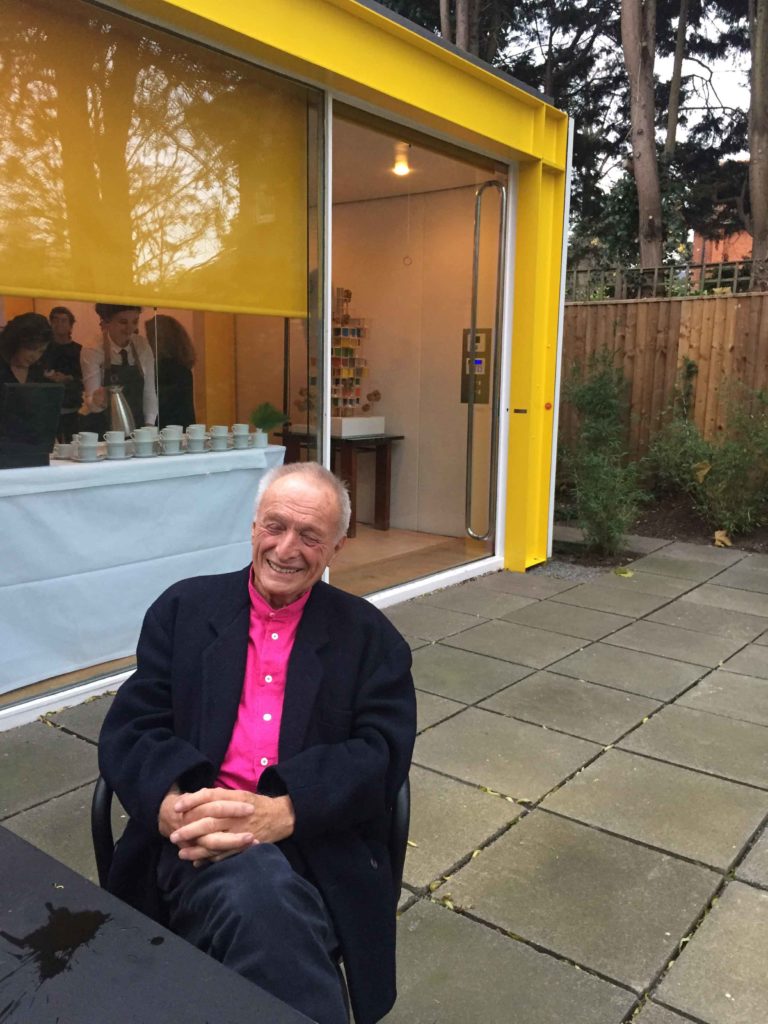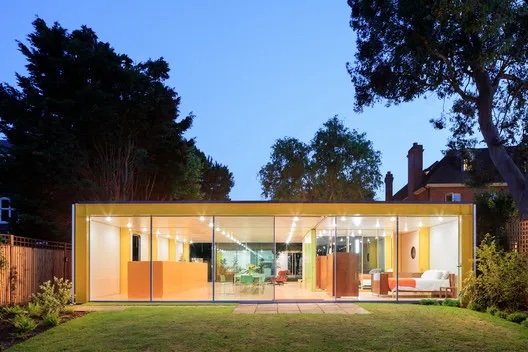
Richard Rogers was one of the few remaining major figures in architecture whose career and education had a direct link with the ideological project of the modern movement and its call for social change. Richard loved bright colors, in architecture and in clothing, and believed in the contribution of cities toward a better quality of life. More specifically, he championed urban regeneration on brownfield or disused sites with an emphasis on compactness and density.
Born in Italy and raised in the UK, his ideas and works were shaped by his European heritage. He was related to the celebrated Italian architect Ernesto Nathan Rogers, editor of Casabella magazine and a founding member of BBPR, the practice responsible for the iconic Torre Velasca in Milan.
Despite having dyslexia, Richard completed his diploma at the Architectural Association in London, where he worked with Peter Smithson, among others. He then continued his education at Yale under Paul Rudolph. His time at Yale coincided with that of another British architect, Norman Foster.
Richard will probably be best remembered for two of his practice’s most iconic buildings, the Pompidou Center in Paris (1977) and Lloyd’s in London (1986). The former was designed in collaboration with Renzo Piano; Peter Rice was the engineer on both.
However, it is two relatively small houses that helped define his characteristic approach toward architecture. The first of these, Creek Vean, was designed within the context of a collaborative practice, Team 4, made up of Richard Rogers, Norman Foster, and their then partners, Su Rogers and Wendy Ann Foster. Anthony Hunt was the engineer for the project, which was completed in 1966.
Looking at the house today, one wouldn’t associate it with the later work of either Richard Rogers or Norman Foster—apart, perhaps, from the open-plan interiors with their beautiful views of the landscape captured through the plate glass windows. Still, the house is important for Richard’s subsequent and lifelong commitment to teamwork and the idea of collaborative practice.
While Creek Vean was designed for Su’s parents, Richard soon had the opportunity to design a house in the London suburb of Wimbledon for his own parents, a doctor and a ceramicist. Based on an unrealized project, the Zip-Up house, it required the use of factory-made insulation panels that could be easily assembled on site. Ironically, given this dream of industrial production, the result was, to a large extent, a bespoke and handcrafted artifact. But the innovative and experimental house not only captures the DNA of Richard’s later work, it also exemplifies the sense of lightness, joy, and color that defines the best characteristics of his architecture.
On a personal note, I was fortunate to have Su Rogers amongst a group of teachers when I first started my architectural education. Later, during my tenure as the dean of the Harvard Graduate School of Design, Richard and his second wife, Ruthie, generously gifted the Wimbledon house to the GSD. The house was meticulously restored by Gumuchdjian Architects. Philip Gumuchdjian had been a former student and had also worked with Richard for a long time before setting up his own practice. The landscape architect for the restoration of the garden was a GSD graduate, Todd Longstaffe-Gowan.

When the house was first built it had a carport, which was subsequently turned into a separate smaller house, creating an intimate courtyard with the main house. The two buildings, with the help of a generous donor, provided the basis for a GSD/Richard Rogers residential fellowship program. The aim of the Richard Rogers Fellowship was to enable designers and scholars from around the world to spend up to three months in London and to engage in the study of the built environment. Richard’s own interests in architecture, culture, technology, the arts, and the city provided the framework for the broader scope of the fellowship.
In addition, a series of events on the city, and London more specifically, brought a diverse range of speakers and experts together. Organized as a “salon,” these small gatherings of around 50 people in the main living room of the house created great opportunities for debate, on such topics as engineering and housing. It was inspiring to have Richard participate in these events and to meet and mentor the fellows. He also enjoyed the experience very much.
Richard and Ruthie spent about a week at the GSD a few years ago when we invited them to be the Senior Loeb Fellows. Ruthie, a celebrated chef, gave a wonderful talk about how they managed and organized the produce and the menu at her restaurant, the River Café. Richard met with students and talked about architecture and, as you might expect, about what it could do for society.
Probably more than any other architect of the recent past, Richard was committed to architecture and technology’s social and political impact. It can be argued that his practice’s work, especially the exclusive residential projects, didn’t always align with his intellectual and political beliefs. But during certain moments, the practice’s outcome genuinely challenged the relationship between architecture, technology, and the conditions of production. He also managed to be hugely influential for a period of time with Britain’s then ruling Labour Party by making architecture and the built environment topics of political significance that affect people’s quality of life, and indispensable cornerstones of democracy.
I will miss Richard’s friendship, warmth, and generosity. And of course, his flair for colors.